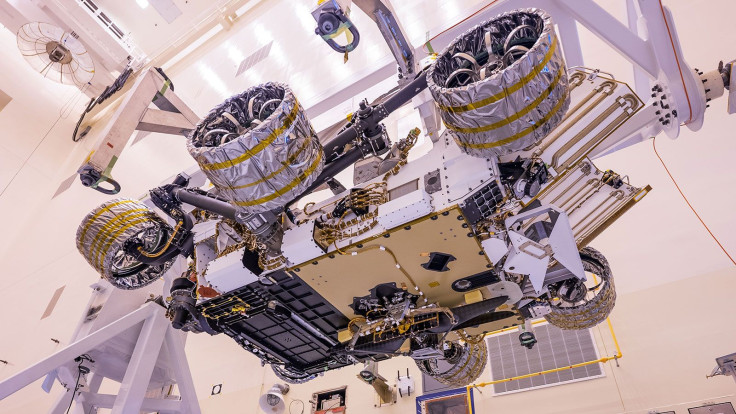NASA Successfully Attaches Mars Helicopter To Perseverance Rover

KEY POINTS
- Perseverance will collect samples from Mars
- NASA has attached the Mars Helicopter to Perseverance
- The Mars Helicopter can generate its own power
NASA has successfully attached the Mars Helicopter to its Perseverance rover in preparation for its upcoming mission to the Red Planet. The agency also provided new details regarding the helicopter’s operations.
NASA’s upcoming mission to Mars is scheduled to launch on July 17. The mission is expected to reach its target, which is the Jezero crater on Feb. 18, 2021. As confirmed by NASA, the main objective of the mission is to collect samples from Mars. Through a future missions, these samples will be brought back to Earth to analyze if they contain traces of alien life.
For the upcoming mission, NASA developed a new rover known as Perseverance. This rover will be accompanied by a new probe known as the Mars Helicopter. As its name suggests, the Mars Helicopter is a drone designed to fly on Mars. It will serve as the first aircraft to fly on Mars or another planet.
Aside from exploring areas that can’t be reached by the rover, the Mars Helicopter will also plan Perseverance’s route from the air.
On April 6, NASA successfully attached the Mars Helicopter to the belly of Perseverance. This is where the drone will be safely stored for about two and a half months following Perseverance’s arrival on Mars.
As noted by NASA, the drone will be deployed sometime in May next year. Once Perseverance has traveled a total distance of 330 feet, the Mars Helicopter will undergo extensive testing to ensure that all of its systems are functioning properly.
As confirmed by NASA, the Mars Helicopter will be powered by the Perseverance rover for its first flight mission on the Red Planet. After that, the drone will rely on its solar panels and its propellers to collect and generate energy.
“The team confirmed the helicopter could receive an electrical charge from the rover,” NASA explained. “Before being deployed onto the surface of Jezero Crater, the Mars Helicopter will rely on the rover for power. Afterward, it will generate its own electrical power through a solar panel located above its twin counter-rotating propellers.”
© Copyright IBTimes 2024. All rights reserved.





















